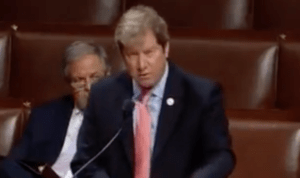
Lewis issued a statement after President Trump signed a directive yesterday tasking the U.S. Department of Transportation with implementing the program.
“I’m pleased to see the President take this important action today recognizing the significant role that drones have to play in a 21st century economy. As this technology continues to grow and develop, we have to work to successfully incorporate drone use while keeping in mind the specific needs of each of our local communities. That’s exactly what my Drone Innovation Act does.
“While this pilot program recognizes some of the principles I’ve advocated for, unfortunately, it doesn’t go far enough in protecting local control and the rights to privacy and property.
“As we move forward, the next step is to ensure that our communities cannot only help expand the beneficial uses of drones, but that they also have the ability to take effective action when it comes to putting in place reasonable limitations on public use. I look forward to continuing to work alongside the White House and Secretary Chao to see that these foundational principles and rights are upheld.”
The issue of the role of state and local governments in drone regulation is growing in importance to the drone industry. In 2015, the FAA issued a Fact Sheet to state and local governments emphasizing their sole right to regulate the national airspace (NAS.) Since then, however, state and local laws have proliferated. While some strive to be industry friendly, others are poorly researched and have the unintended consequence of stifling commercial applications.
As advocacy groups continue to fight against a “patchwork quilt” of drone regulation, the FAA appears to have softened its stance. In recent months, FAA Administrator Michael Huerta has indicated that there may be a collaborative role in drone regulation from local governments. The Drone Advisory Group Task Group 1 was formed to help make recommendations on the appropriate roles and responsibilities for all stakeholders, including those of state and local governments.
Congress, in the meantime, has moved to appease a public fearful of drones in their communities. California Senator Dianne Feinstein introduced the “Drone Federalism Act,” which would have granted states sweeping powers to regulate drones. Representative Lewis introduced the “Drone Innovation Act” in the House. That Act would have granted states the right to regulate drones up to 200 feet in altitude. Some industry leaders supported the Drone Innovation Act as providing clarity and some limitation on regulation; others say that drone regulation should be a federal responsibility.
The new UAS Integration Pilot Program does not directly address the issue of states’ rights in regulation but provides state, tribal and local governments with a role in testing new operations with industry partners. Participants will provide data and feedback to the FAA which will inform future regulation.
Miriam McNabb is the Editor-in-Chief of DRONELIFE and CEO of JobForDrones, a professional drone services marketplace, and a fascinated observer of the emerging drone industry and the regulatory environment for drones. Miriam has penned over 3,000 articles focused on the commercial drone space and is an international speaker and recognized figure in the industry. Miriam has a degree from the University of Chicago and over 20 years of experience in high tech sales and marketing for new technologies.
For drone industry consulting or writing, Email Miriam.
TWITTER:@spaldingbarker
Subscribe to DroneLife here.